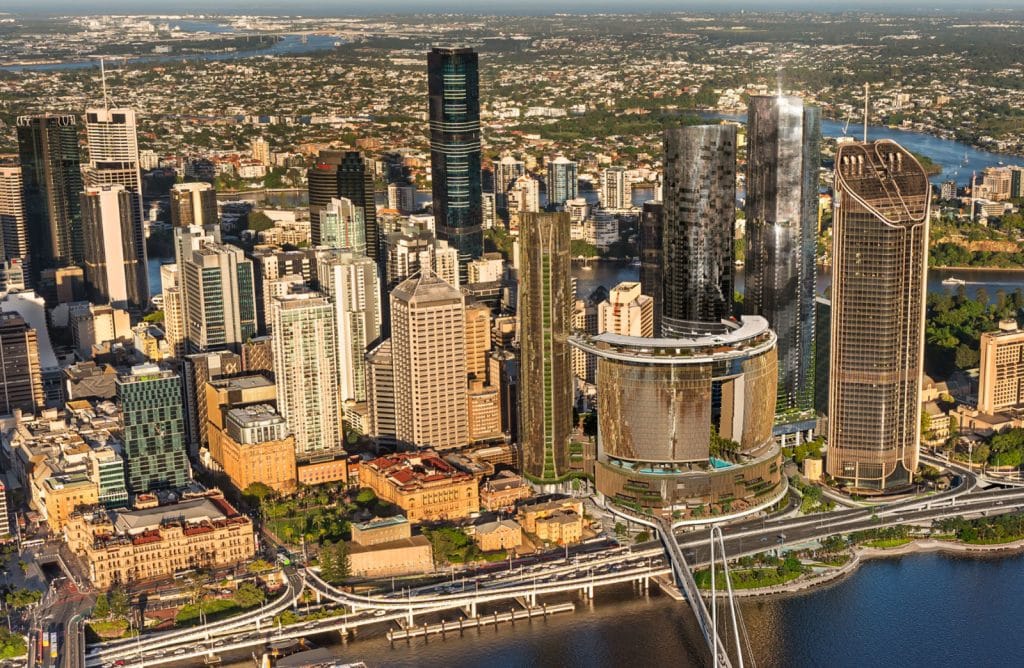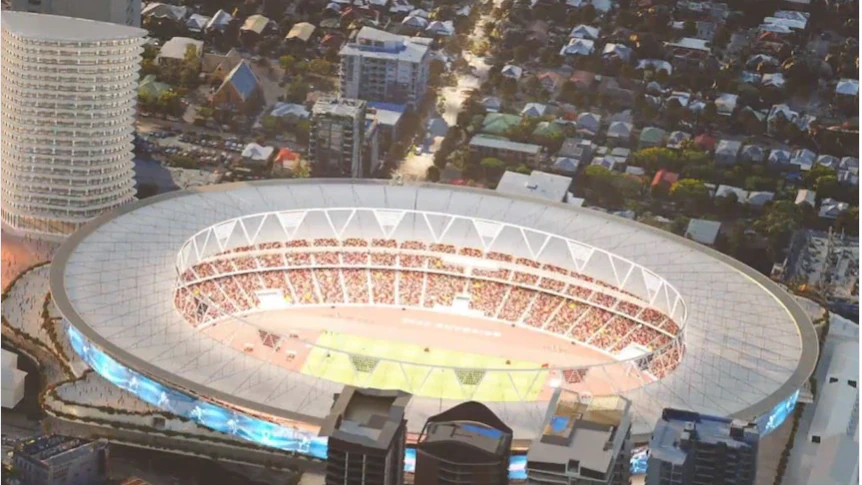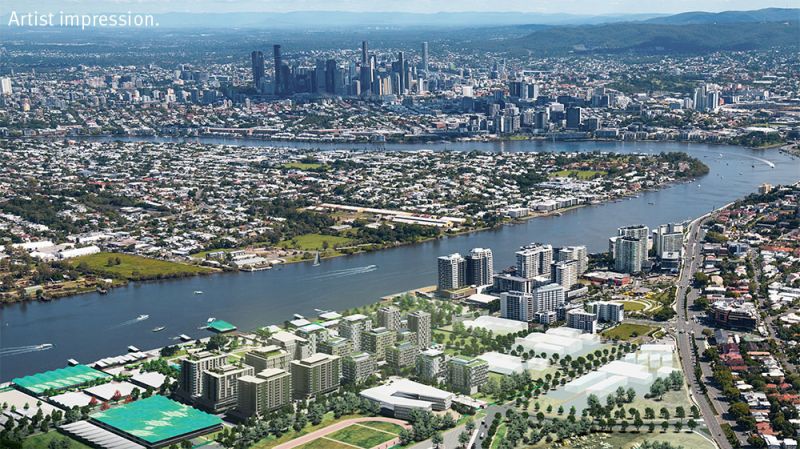Blog
Transforming Brisbane: The Rise in Real Estate Prices Amidst Major Infrastructure Developments
November 23, 2023

Brisbane’s real estate market is on the brink of a significant transformation, driven by a robust infrastructure boom. With a series of major developments lined up, the city is set to witness a remarkable change in its landscape and, consequently, real estate prices. This article explores the intricate relationship between these infrastructure projects and the potential uplift in Brisbane’s property market, offering insights for real estate stakeholders to navigate this evolving landscape.
The Infrastructure-Property Value Connection Infrastructure projects have a profound impact on property values, primarily through:
- Accessibility and Connectivity: Enhanced transportation infrastructure improves accessibility, making regions more attractive for residents and businesses, thereby increasing property demand and values.
- Economic Growth: Large projects typically bring employment opportunities, attracting a larger population and boosting demand for housing and commercial spaces.
- Improved Amenities: Development of modern infrastructure often leads to better utilities, recreational areas, and public services, increasing the desirability of an area.
Brisbane’s Noteworthy Upcoming Developments Several key developments are shaping Brisbane’s property market:
2032 Brisbane Olympics

Development and Infrastructure: The 2032 Brisbane Olympics will include up to 14 new sports venues in Brisbane, seven on the Gold Coast, and five on the Sunshine Coast. These developments are already in the planning stages with the Brisbane City Council and the International Olympics Committee.
Key Venues: The Gabba will undergo a $1-billion redevelopment to serve as the main stadium, hosting the opening and closing ceremonies as well as athletics. Other new venues include the 17,000-capacity Brisbane Arena for swimming and the Brisbane Indoor Sports Centre for basketball. The Chandler Indoor Sports Centre will also be constructed to host gymnastics.
Economic Impact: An independent economic assessment has indicated that the Games will deliver a total benefit of $8.1 billion for Queensland, and $17.61 billion for Australia. Queensland’s tourism sector is expected to be a key beneficiary, creating up to 130,000 direct jobs.
Athletes Villages

Northshore Hamilton: A 14,000-bed athletes’ village at Northshore Hamilton, 6km from Brisbane CBD, will host over 10,000 athletes and team officials. Post-Games, the village could be repurposed as a mix of private and public housing, including aged care, retirement living, and affordable housing.
Gold Coast and Robina: The Gold Coast will contribute 2000 beds with existing hotels in Surfers Paradise. A second athletes’ village in Robina will house up to 2600 athletes and officials in a new residential development.
Cross River Rail

Project Overview: This 10.2 km rail line includes 5.9 km of twin tunnels under the Brisbane River and CBD, with four new underground stations at Boggo Road, Woolloongabba, Albert Street, and Roma Street.
Enhanced Connectivity: The project will increase the frequency of trains across Southeast Queensland and reduce congestion. It includes a new above ground station at Exhibition and a rebuild for seven suburban stations between Dutton Park and Salisbury.
Station Details: The Albert Street Station will improve connectivity to the southern part of the CBD. Boggo Road will become a major transport interchange, and Roma Street will transform into Brisbane’s ‘Grand Central’
Brisbane Metro

Project Description: The Brisbane Metro is a 21km-long rapid transit system with two lines connecting Eight Mile Plains to Roma Street and Royal Brisbane Women’s Hospital to the University of Queensland. It aims to reduce travel times, congestion, and bus congestion in the CBD while improving suburban services.
Infrastructure and Rolling Stock: The project involves upgrades to existing busway stations and the construction of a new underground station at the Cultural Centre. A fleet of 60 high-capacity bi-articulated metro vehicles will be used, each accommodating up to 150 passengers with facilities like Wi-Fi and customer information systems.
Queen’s Wharf Brisbane

Initiation and Development: The project, initiated in November 2015, is a joint venture led by The Star Entertainment Group with Far East Consortium and Chow Tai Fook Enterprises. It involves a $3.6 billion investment to create a world-class tourism precinct. Situated between the Brisbane River and George Street and between Alice and Queen streets, the development area contains heritage buildings and neglected riverfront land.
Economic Impact: Creating thousands of jobs during construction, the project is expected to generate 8,000 jobs when fully operational. Over $3 billion capital investment has been made, with significant training hours and support for local suppliers and contractors. The development aims to elevate Brisbane as a global tourism, leisure, and entertainment destination, particularly ahead of the 2032 Olympic and Paralympic Games.
Features: The development will offer more than 12 football fields of redeveloped public spaces, including a pedestrian bridge to South Bank, an iconic ‘Arc’ building with a Sky Deck, a moonlight cinema, high-end retail precincts, and approximately 50 new dining venues.
Brisbane Live

Inspiration and Location: Drawing inspiration from New York City’s Madison Square Garden and Melbourne’s Federation Square, Brisbane Live is designed to utilize air space above existing rail lines at Roma Street. It benefits from excellent connectivity with every rail line in the SEQ rail network.
Central Features: The project’s centerpiece is a new 17,000-seat world-class arena, expected to host international concerts, performances, and world sporting events. The plan includes a sliding front wall for live acts, a 4000-capacity rock club, multiplex cinemas, restaurants, bars, and an amphitheater catering to around 15,000 people.
Public Space: The development will feature substantial public space, roughly the size of New Farm Park, and include Jacaranda Grove, a central water-based parkland area.
Impacts of Infrastructure Pipelines on Real Estate Values
Infrastructure projects have historically led to substantial growth in property markets. For example, the Sydney Olympics in 2000 significantly boosted the city’s property market. Similarly, London’s Jubilee Line extension led to a substantial increase in property values around new stations. In Brisbane, the extensive infrastructure developments are expected to have a similar effect, catalyzing property value growth across various suburbs. The 2032 Olympic projects, Cross River Rail, Brisbane Metro, Brisbane Live, and Queen’s Wharf are some of the major projects that will likely contribute to this boom. Property prices in southeast Queensland are anticipated to soar in the lead-up to the 2032 Olympics, with significant new residential supply entering the market post-Games. This will likely lead to considerable growth in house prices in areas like Tennyson, Chandler, Woolloongabba, South Brisbane, Redland Bay, and Coomera.
As Brisbane undergoes this significant infrastructure boom, the real estate market is set to experience a new era of growth and prosperity. Understanding the potential impacts of these developments is crucial for real estate agents, investors, and homeowners. Staying informed and adaptable in the face of these changes will be key to leveraging the opportunities presented by Brisbane’s dynamic property market.
